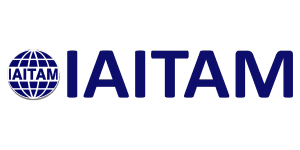Is Your SAM Program Supporting Your Organization’s Goals and Drivers?

Managing software efficiently and effectively can be a costly endeavor, but its one of critical importance for any organization. ITAM best practices, policies, and procedures are necessary to ensure compliance, reduce costs, and increase productivity. If we can get everyone’s commitment to following ITAM best practices, it will improve overall business performance.
ITAM Best Practices not only drive efficiency and productivity, they can be applied to other business units’ processes, tasks, and functions!
Take inventory management and how it impacts our budgets, for example. Just as we need to keep track of how many software assets we have in the environment and where they are, an office manager may need to keep track of pens, or sticky notes. Both areas have costs attributed to them and in both areas these costs add up if these assets or supplies are irresponsibly sourced, mismanaged, or become lost or stolen. By proactively managing our software inventory, we can ensure that unnecessary purchases are avoided, software that is being used in the environment aligns with the organization’s needs for efficiency, security, and cost. This proactive method of asset management can be applied across all teams to create a more efficient workplace and more accurately calculate budget needs.
As another example, we can look to compliance. Just like we need to be in compliance with copyright laws as they relate to software, our marketing and advertising teams need to be in compliance with copyright laws that relate to audio or visual content. If the Recording Industry Association of America audits your organization after the advertising committee releases a new commercial that features a popular song, your organization could suffer from future software audits too! Any bad publicity surrounding compliance is a red flag to vendors and auditing agencies.
Let’s also consider project management. By including IT Asset Managers in the planning of projects external to ITAM, we can ensure that project teams have access to the software and equipment they need at the right time to meet the deliverables of the project. We can also ensure that the tasks are executed throughout the various project phases in a way that aligns with our organization’s ITAM and security needs. There are also many ITAM projects that provide a benefit to the organization as a whole, such as implementing a Mobile Device Program, or developing policies and procedures that enable employees to work from home.
How do we gain the understanding and support of our ITAM Best Practices so that we can support the organization?
Communication and education, of course! Ensure all employees are trained on ITAM policies and procedures, why they’re necessary, and how they benefit their department and the whole organization. Take the time to educate yourself on the needs of your organization, the goals of your Executive Officers, and assess how well ITAM is doing at meeting them. Ensure that you are implementing well planned processes that reduce manual effort and increase accuracy and productivity and share those successes with the rest of the organization. Use your program reporting to share the issues and challenges that have been recently identified, those for which a plan is in place, and those that have been resolved, along with the steps to resolution. So, is your SAM Program supporting your organization? Answer these self-assessment questions to find out what you’re doing well and what you could be doing better:
- Do we have accurate, up-to-date, and effective inventory processes?
- Are we working together with our Legal team to ensure compliance with all laws, regulations, and contracts that relate to the use of our organization’s IT assets? How often do we review our software licenses?
- How effective are our Communication and Education efforts? Have we built a strong Employee Awareness Program? Are our ITAM Policies equally enforced?
- Has ITAM supported other business units in project planning? How are we at planning and executing ITAM Projects?
- Have we been able to use cost optimization strategies to benefit the whole organization; for example, saving a percentage of the annual software budget for a particular license and reallocating that portion to the Sales Team or Tech Support?
Your answers will show not only how the SAM Program is functioning to maximize the value of software, but also how well we are working with other departments so they can learn to mirror best practices and drive maturity into their own programs. Since ITAM professionals’ cross paths with every other department in the organization, this is what provides real organizational value!
